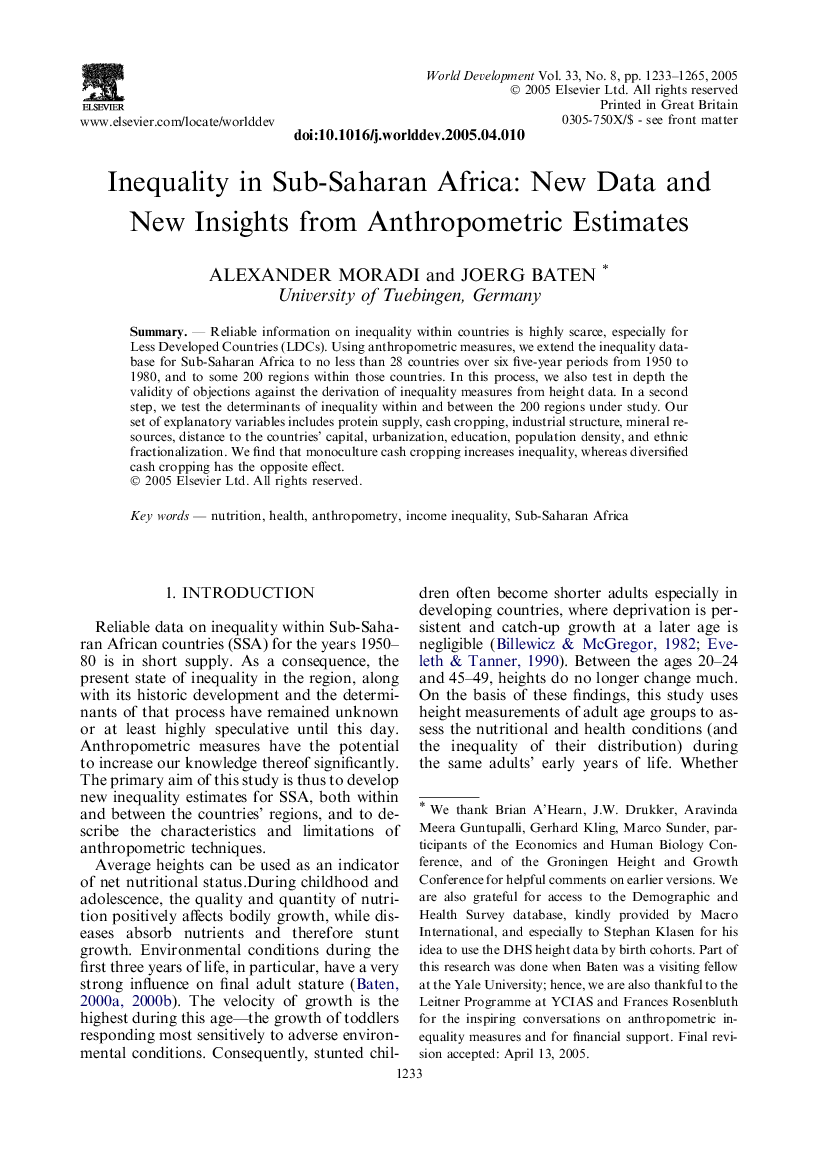| Article ID | Journal | Published Year | Pages | File Type |
|---|---|---|---|---|
| 10486526 | World Development | 2005 | 33 Pages |
Abstract
Reliable information on inequality within countries is highly scarce, especially for Less Developed Countries (LDCs). Using anthropometric measures, we extend the inequality database for Sub-Saharan Africa to no less than 28 countries over six five-year periods from 1950 to 1980, and to some 200 regions within those countries. In this process, we also test in depth the validity of objections against the derivation of inequality measures from height data. In a second step, we test the determinants of inequality within and between the 200 regions under study. Our set of explanatory variables includes protein supply, cash cropping, industrial structure, mineral resources, distance to the countries' capital, urbanization, education, population density, and ethnic fractionalization. We find that monoculture cash cropping increases inequality, whereas diversified cash cropping has the opposite effect.
Related Topics
Social Sciences and Humanities
Economics, Econometrics and Finance
Economics and Econometrics
Authors
Alexander Moradi, Joerg Baten,
